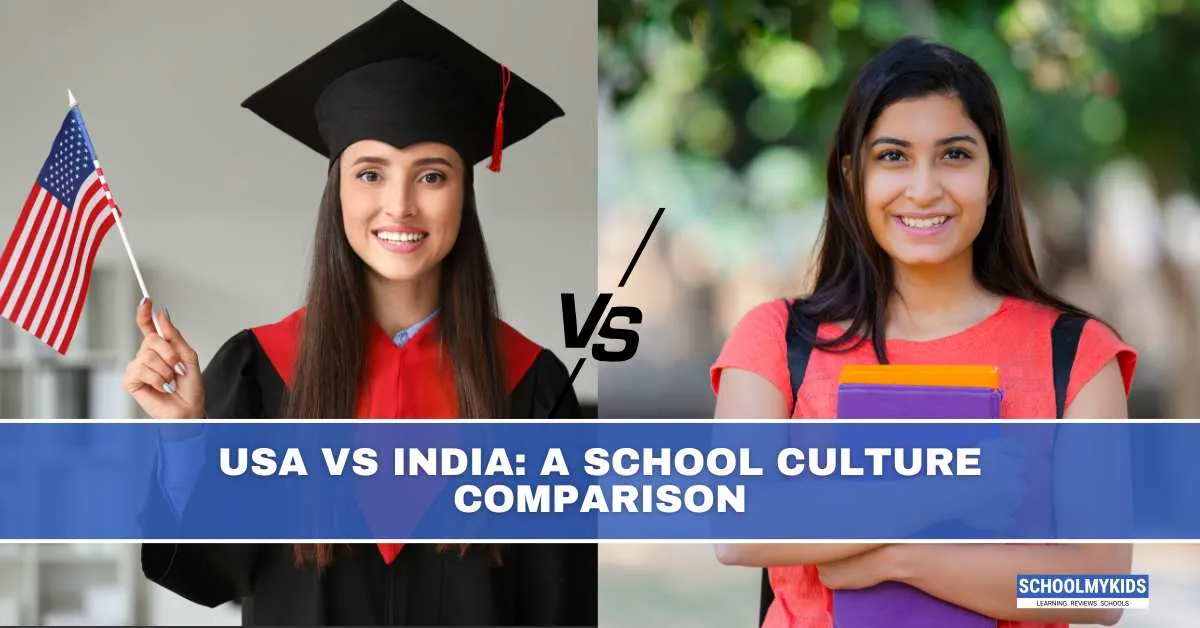The education systems of the United States and India are among the largest and most diverse in the world. While both countries aim to provide knowledge, skills, and values to their young citizens, their school cultures differ significantly in terms of philosophy, structure, teaching methods, expectations, and outcomes. Understanding these contrasts offers valuable insight into how culture shapes education.
1. Curriculum and Educational Approach
In the United States, the curriculum is flexible and encourages creativity, exploration, and self-expression. Students are often given choices in subjects, and interdisciplinary learning is encouraged. Critical thinking, project-based learning, and open discussions are commonly used in classrooms. The aim is to promote holistic development.
In contrast, Indian schools traditionally follow a rigid, exam-focused curriculum. Students often face pressure to excel in academic subjects, especially in science and mathematics. Rote learning and memorization are still common in many schools. However, with the implementation of the New Education Policy (NEP) 2020, India is gradually shifting towards a more skill-based and flexible approach.
2. Classroom Environment and Student-Teacher Relationship
In the USA, classrooms are interactive spaces where students are encouraged to ask questions, debate, and share opinions. The student-teacher relationship is friendly and informal, promoting confidence and communication.
In India, classrooms are often more formal and teacher-centered. Students may hesitate to challenge or question teachers. While respect for teachers is deeply embedded in Indian culture, the gap in interaction may limit the development of independent thinking in many traditional schools.
3. Emphasis on Grades and Exams
In India, academic success is measured heavily through examinations and board results. High scores in 10th and 12th-grade board exams are critical for college admissions, especially for prestigious institutions like IITs and AIIMS. As a result, students often attend extra coaching or tuition classes, sometimes spending hours outside school studying.
In the USA, while grades and SAT/ACT scores are important, college admissions also consider extracurricular activities, leadership qualities, community service, and personal essays. The emphasis is on well-rounded development, not just academic excellence.
4. Co-curricular and Extracurricular Activities
American schools promote a strong co-curricular culture. Sports, arts, music, theater, and clubs are an integral part of school life. Students are encouraged to find and pursue their passions alongside academics.
In Indian schools, especially in urban and private institutions, extracurriculars are gaining importance. However, in many public or rural schools, co-curricular activities are still limited due to a lack of funding or infrastructure. Academic achievement often overshadows other forms of talent.
5. Technology in Classrooms
Technology is deeply embedded in American education. Classrooms are equipped with smart boards, projectors, and internet access. Digital learning platforms like Google Classroom, Khan Academy, and online assessments are standard tools.
India is catching up with the digital revolution, especially post-COVID. Ed-tech companies like Vedantu and government initiatives like DIKSHA are expanding access to digital learning. However, the digital divide—especially in rural areas—remains a major challenge.
6. Language and Medium of Instruction
In the USA, the primary medium of instruction is English, and there is increasing support for bilingual education for non-native speakers. Diversity is embraced, and multiculturalism is reflected in curriculum content.
In India, the medium varies between English and regional languages, depending on the school board. While English-medium schools are seen as more prestigious, government schools often use the local language. This can create language barriers for students transitioning between systems.
7. Parental Involvement and Societal Expectations
American parents are typically involved in school activities, parent-teacher meetings, and student decision-making. However, there is also a strong emphasis on allowing children to make independent choices.
Indian parents tend to be highly involved in their child’s education, often influencing career choices. Academic success is seen as a key to social mobility, so societal and family pressure can be intense. Careers in engineering, medicine, or civil services are often prioritized.
8. School Infrastructure and Resources
American public schools are generally well-equipped with facilities for sports, science labs, libraries, and arts. There is significant government funding, though disparities exist between rich and poor districts.
Indian schools vary widely. Elite private schools have world-class infrastructure, but many government schools struggle with basic amenities like toilets, drinking water, and furniture. Efforts are ongoing to bridge this gap through government and NGO support.
Conclusion
The United States and India offer two contrasting pictures of education: one focused on individual growth and creativity, and the other traditionally centered on discipline and academic performance. Both systems have their strengths and challenges.
India is moving toward a more inclusive and skill-based model, while the U.S. is grappling with issues like educational inequality and standardization. Ultimately, the best aspects of both systems could be combined to create an ideal school culture—one that values both academic excellence and human development.








Be the first one to comment on this story.